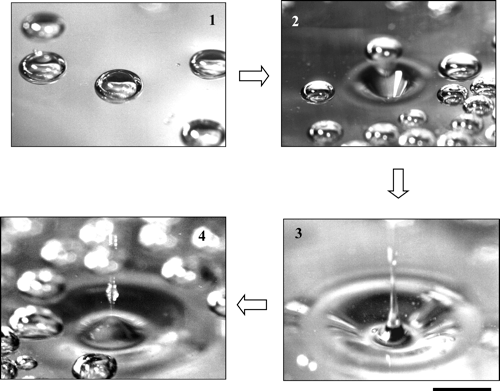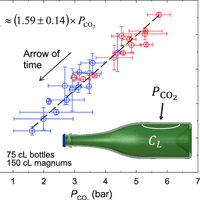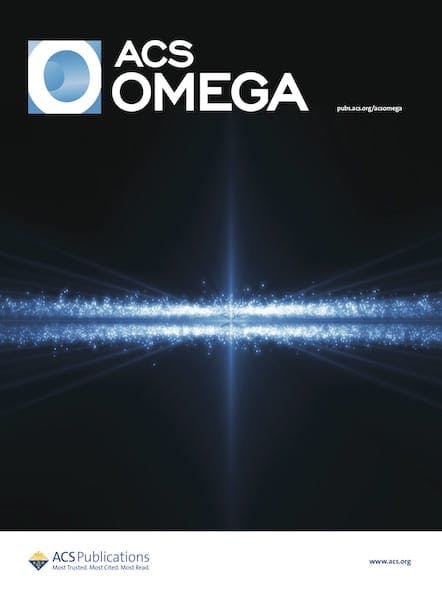Millions of bottles of champagne are produced every year, and it’s been the go-to celebration drink in many countries for centuries. But how long can you age a bottle of bubbly without it losing its signature fizz?

In 2022, 325 million bottles of champagne were produced from a mix of chardonnay, meunier, and pinot noir grapes grown on 34,200 hectares in a specific region of France.1 We’ve seen recently that packaging has an impact on the flavor and freshness of beer as it ages, but does the same apply to champagne and other sparkling wines?
The signature element of champagne is, of course, the bubble—the carbonation generated during a second round of fermentation that occurs inside the sealed bottle. During this process, known as prise de mousse, gas generated by the yeast as it uses up the sugars progressively dissolves, resulting in around five liters of carbon dioxide held within each 750 ml bottle.2-3 As well as the characteristic bubble, the gas is responsible for the progressive release of volatile organic compounds into the glass headspace, which modify the consumer’s perception of smell and flavor.4
A state-of-the-art review published in 2005 (speaking of aging well) explains that when a bottle is opened, the partial pressure in the headspace falls, so the carbon dioxide in the wine is no longer in equilibrium with its partial pressure in the vapor phase. To recover a new stable thermodynamic state corresponding to the partial pressure in the atmosphere, almost all of the carbon dioxide molecules dissolved in the champagne must escape. To achieve this, there are three main steps in a bubble’s brief life: nucleation on the glass wall, ascent and growth through the liquid, and finally bursting at the surface.5

After the second fermentation is complete, bottles are aged for a minimum of 15 months—but vintages can be kept for much longer, with aromas continuing to develop as they mature. However, the issue is that crown caps or cork stoppers used to seal the bottles during champagne aging do not completely prevent gas transfer. So how long does the fizz potential last when bottles are stored, and what can be done to preserve the bubbles?
The Effervescence & Champagne Research Team at The University of Reims Champagne-Ardenne, led by Gérard Liger-Belair, set out to answer this question for us by measuring dissolved carbon dioxide and its ability to produce bubbles in a tasting glass. They looked at 13 vintages aged 25 to 47 years, which had been stored in either standard size bottles (75 cL) or magnums (150 cL).6
The results, published in ACS Omega, revealed that—as their article title states—size really did matter! The magnums retained their dissolved fizz much more efficiently than the same vintages in standard bottles. The authors estimated a 40-year shelf-life for standard 75 cL bottles, 82 years for the magnums (150 cL), and 132 years for 300 cL jeroboam bottles.6

Losses of Yeast-Fermented Carbon Dioxide during Prolonged Champagne Aging: Yes, the Bottle Size Does Matter!
The authors report that an estimated 1 billion bottles of different sizes and capacities are currently aging in champagne cellars before being put on the market. Each will undergo a process of disgorging to remove the yeast plug, before being recorked ready for sale. Many of these older bottles will have been sealed with different crown caps to those in use today, but this study makes it possible to predict the shelf-life of a champagne bottle depending on the cap or stopper that was used at the time of the prise de mousse, and it could also help champagne houses to maximize their bubble—specially if they concentrate efforts on magnums and jeroboams in the future. Which, depending on your affinity for this sparkling libation, could definitely be something worthy of a celebratory toast.
References:
- Champagne at a glance. 2023. www.champagne.fr.
- Did You Know: All About the Bubbles. 2023. www.champagne-forget-chemin.fr.
- Liger-Belair, G. and Cilindre, C. Recent progress in the analytical chemistry of champagne and sparkling wines. Annu. Rev. Anal. Chem. 2021, 14, 21.
- Moriaux, A.- L. et al. How Does Gas-Phase CO2 Evolve in the Headspace of Champagne Glasses? J. Agric. Food Chem. 2021, 69, 7, 2262–2270.
- Liger-Belair, G. The Physics and Chemistry behind the Bubbling Properties of Champagne and Sparkling Wines: A State-of-the-Art Review. J. Agric. Food Chem. 2005, 53, 8, 2788–2802.
- Liger-Belair, G. Losses of Yeast-Fermented Carbon Dioxide during Prolonged Champagne Aging: Yes, the Bottle Size Does Matter! ACS Omega 2023, 8, 25, 22844–22853.
